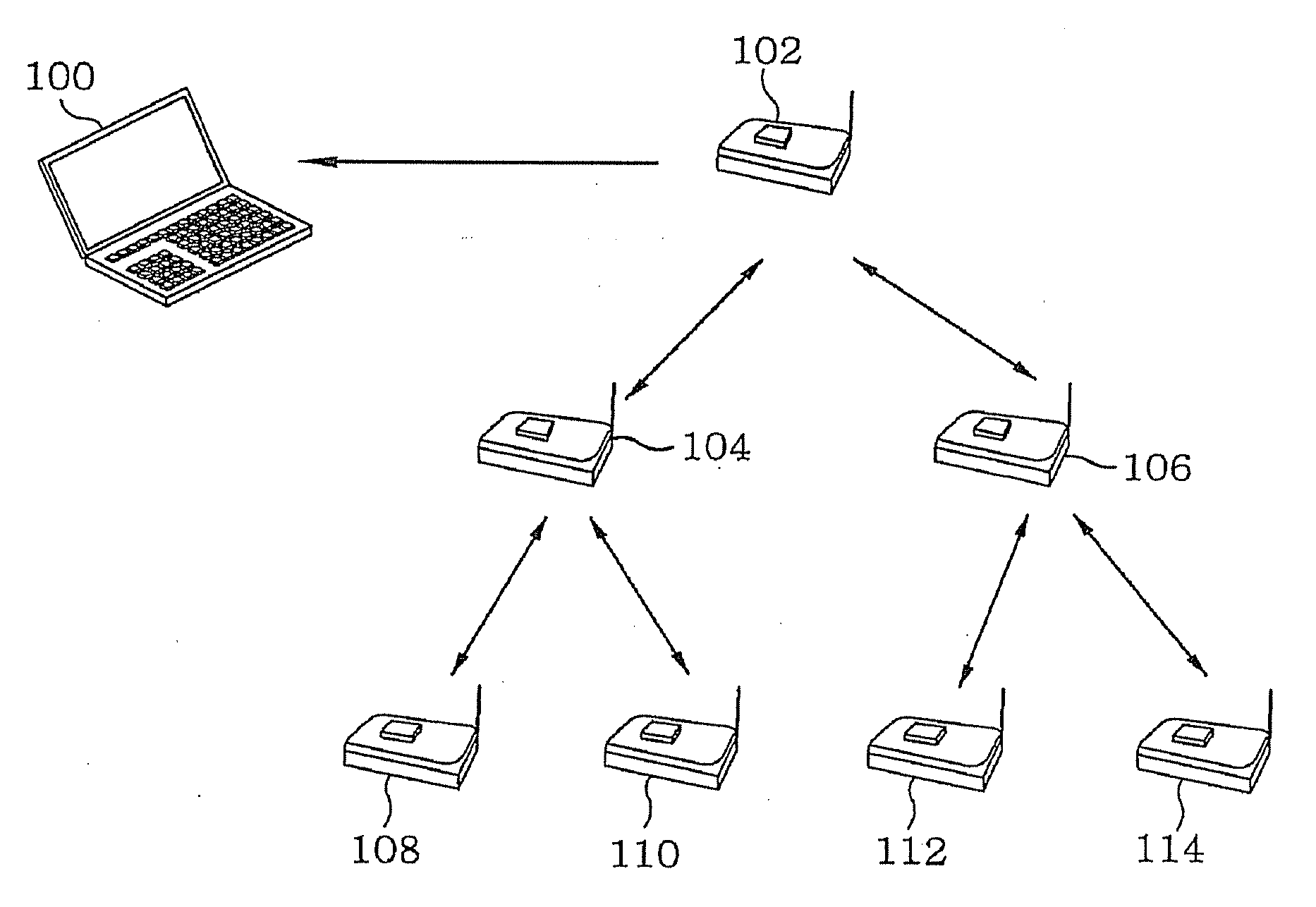Method for grouping sensor nodes in heterogeneous wireless sensor networks
- Summary
- Abstract
- Description
- Claims
- Application Information
AI Technical Summary
Benefits of technology
Problems solved by technology
Method used
Image
Examples
Embodiment Construction
[0033]Hereinafter, an embodiment of the present invention will be described in detail with reference to the accompanying drawings. In the following description, detailed descriptions for well-known functions or constructions will be omitted in case where they would obscure the invention in unnecessary detail. Below terms, which are defined considering functions in the present invention, can depending on user and operator s intention or practice. Therefore, the terms should be defined on the basis of the disclosure throughout this specification.
[0034]The embodiment of the present invention is for upgrading a software code by using a hybrid method which takes advantages of the static structure using the conventional tree shape and the dynamic structure using the virtual machine.
[0035]Two conditions are required to implement the present invention. First, when sensor nodes dynamically form groups, the shape information of the sensor nodes needs to be generated and stored in a sink node....
PUM
 Login to View More
Login to View More Abstract
Description
Claims
Application Information
 Login to View More
Login to View More - R&D Engineer
- R&D Manager
- IP Professional
- Industry Leading Data Capabilities
- Powerful AI technology
- Patent DNA Extraction
Browse by: Latest US Patents, China's latest patents, Technical Efficacy Thesaurus, Application Domain, Technology Topic, Popular Technical Reports.
© 2024 PatSnap. All rights reserved.Legal|Privacy policy|Modern Slavery Act Transparency Statement|Sitemap|About US| Contact US: help@patsnap.com










